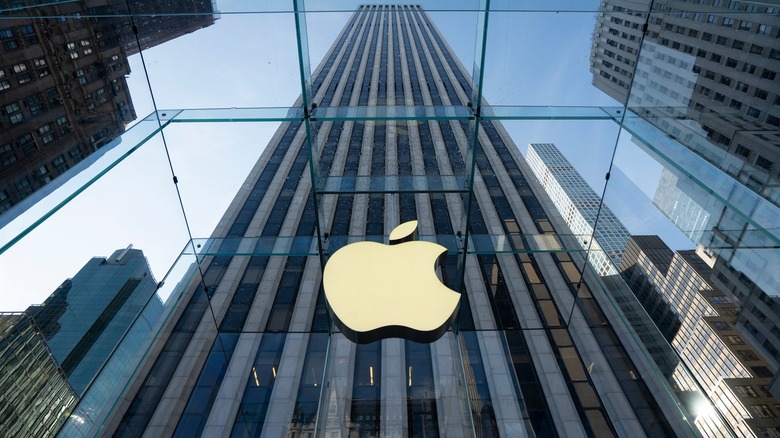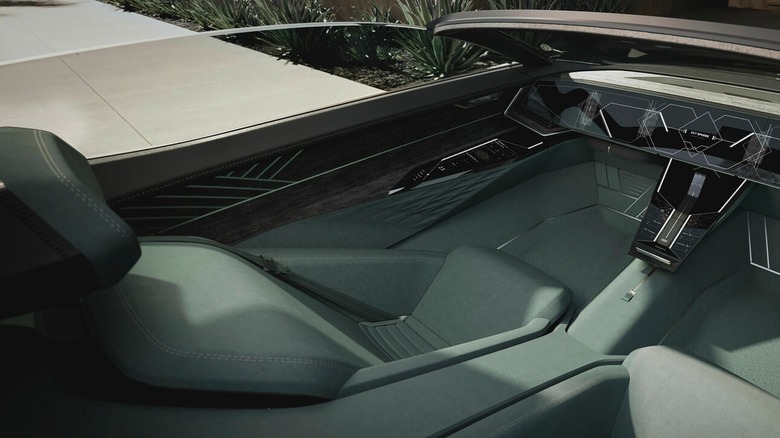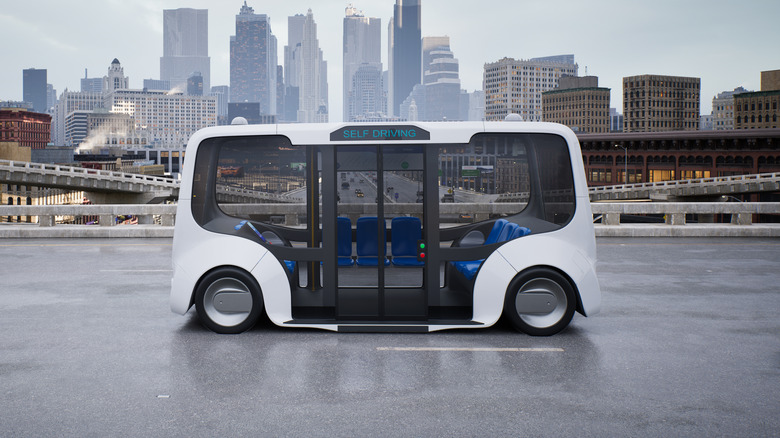The Apple Car Shows Signs Of Life - And Might Come With Retractable Parts
A long string of rumors that date back to at least 2015 have alleged that Apple is working on its first car. The details have changed multiple times over these years, raising uncertainty about the company's plans. The last set of updates stated the Apple car is far from production and will not be available for sale until 2026. However, more recent rumblings have rekindled the seemingly dormant iCar endeavor.
A recent patent granted to Apple fuels the momentum of rumors around its first vehicle and reveals the possibilities of its autonomous driving capabilities. According to the application approved by the U.S. Patent and Trademark Office, Apple has earned the patents for "Retractable Input Devices," suggesting the car could come with a steering wheel and foot pedals that would retract and conceal when not in use.
These alternating configurations would allow the Apple Car to switch between manual and autonomous control modes, and Apple has described contrasting scenarios both involving and excluding the steering wheel and pedals.
Hidden parts to get flushed with interiors
In the patent application, Apple says that manual controls, such as the steering wheel and the pedals, can move away from the driver, creating more room in the cabin. The steering wheel would rotate and tuck away when it is not required — like those flip-out screens on some aftermarket car head units. Multiple car brands, including Audi, BMW, Volvo, Kia, and Opel, have envisioned similar mechanisms for retractable steering wheels for their concept models.
Meanwhile, the pedals would have the option to retract into a dedicated compartment or "recess" in the lower part of the body, flushing the area under the pedal with the rest of the cabin floor.
Based on the patent application, a special sensor might be used to detect the external conditions, such as traffic, terrain, and familiarity of the route, to switch between the manual and automatic modes. In scenarios where the autonomous system deems necessary, the driver will be forced to control the car manually. Conversely, humans could override autonomous controls, suggesting Level 4 autonomous driving capabilities at best — in line with Bloomberg reporter Mark Gurman's previous predictions that the first Apple car will not be entirely driverless. These are, of course, subject to change with evolving regulations around fully autonomous vehicles.
More patents for full autonomy
Concurrently, Apple has also received another patent for an "In-Vehicle Video System," which would use multiple cameras inside and outside the Apple car and record video for viewing at a later stage or sharing with friends and family. It is highly probable that the video feed is utilized to recreate a spatial representation using the Apple Vision Pro for sharing experiences or training.
Besides sharing videos that can be watched on other Apple devices, these video feeds could also be shared in real-time with other autonomous vehicles approaching each other to avoid collision. Alternatively, the video feed may be shared between multiple vehicles to convey information about an already-traversed route. Based on these capabilities, it is safe to assume the in-vehicle video technology might be reserved for later versions of the Apple Car with Level 5 or higher autonomous driving systems.
At the same time, companies sometimes file patents just to preserve intellectual property and claim potential future utilization. It does not always guarantee the patent will come to fruition. So, while the retractable steering wheel and pedals, as well as the in-car video feed, seem pretty convincing, they may not necessarily end up on the Apple Car.


